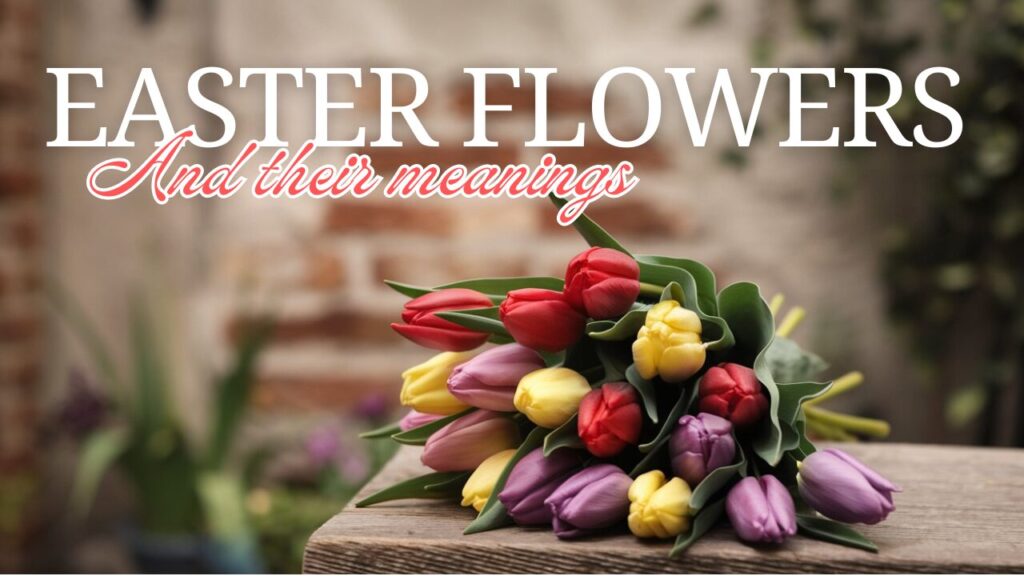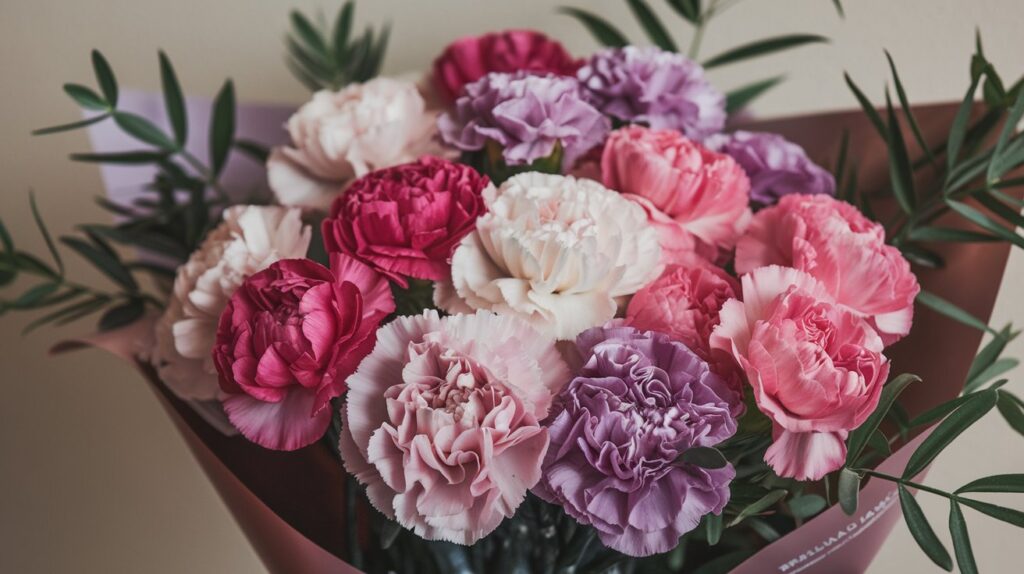Easter flowers are blossoms traditionally associated with the Christian holiday of Easter, symbolizing new life, rebirth, and the arrival of spring. These flowers play a significant role in both religious and secular Easter celebrations, adorning homes, churches, and public spaces with their vibrant colors and fragrances.
In religious contexts, Easter flowers often represent the resurrection of Jesus Christ and the promise of eternal life. For secular celebrations, they embody the renewal and vitality of the spring season. Whether used in church services, as decorative elements, or as gifts, Easter flowers contribute to the festive atmosphere of this important holiday.
Key Takeaways
ToggleTraditional Easter Flowers and Their Meanings
1. Lily (The Catholic Easter flower)

The Easter lily, with its pure white petals and trumpet-like shape, is perhaps the most iconic Easter flower. In Catholic tradition, it symbolizes the purity and divinity of Christ. The lily’s growth from a bulb buried in the ground to a beautiful flower is seen as a metaphor for Christ’s resurrection.
2. Daffodil
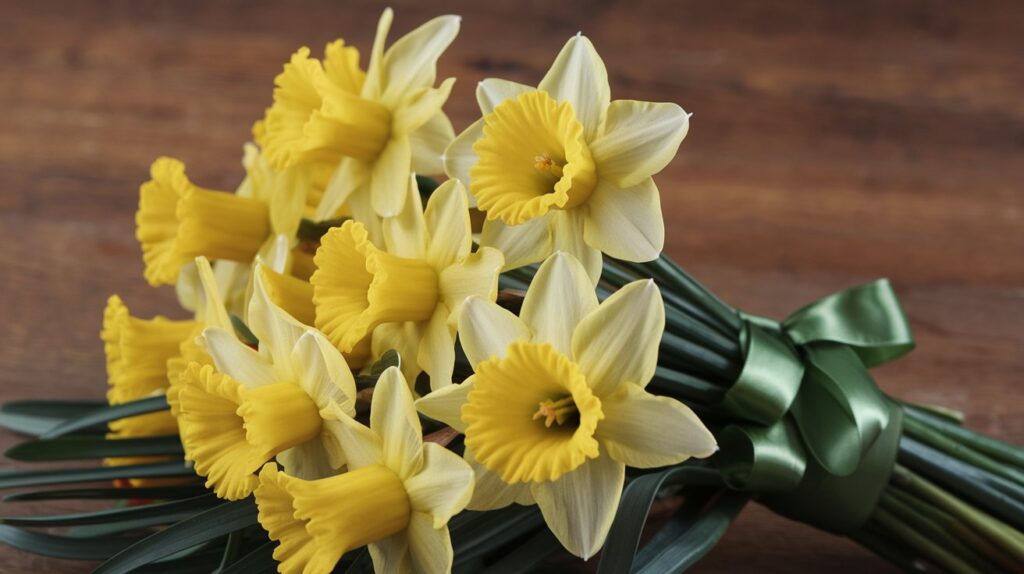
Daffodils, with their cheerful yellow blooms, represent rebirth and new beginnings. In some cultures, they’re called Lenten lilies due to their early spring appearance. These flowers symbolize the end of winter and the joy of the Easter season.
3. Tulip
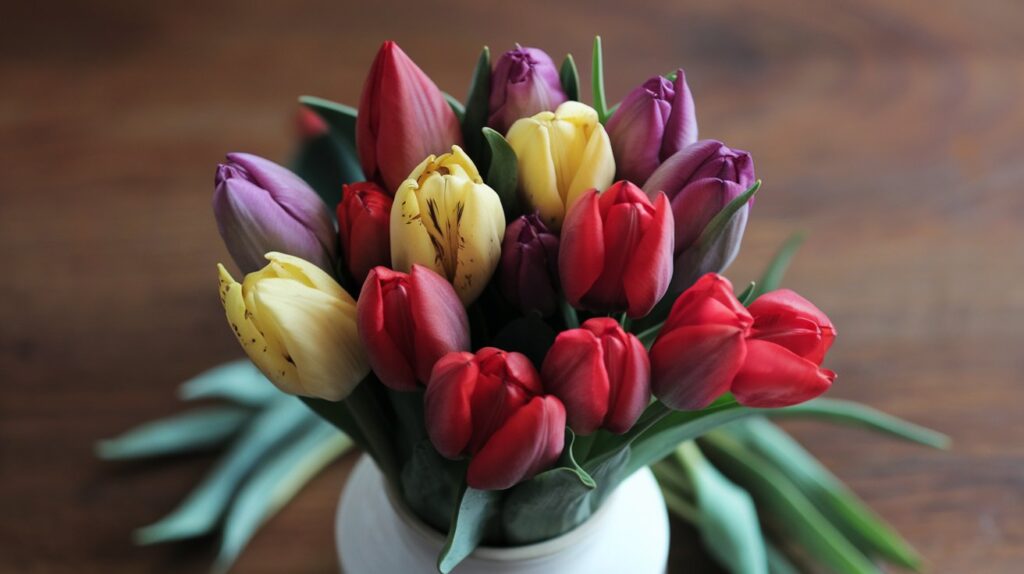
Tulips, available in a variety of colors, are popular Easter flowers that represent perfect love. Red tulips are often associated with Christ’s passion, while white tulips symbolize forgiveness and purity.
4. Hyacinth
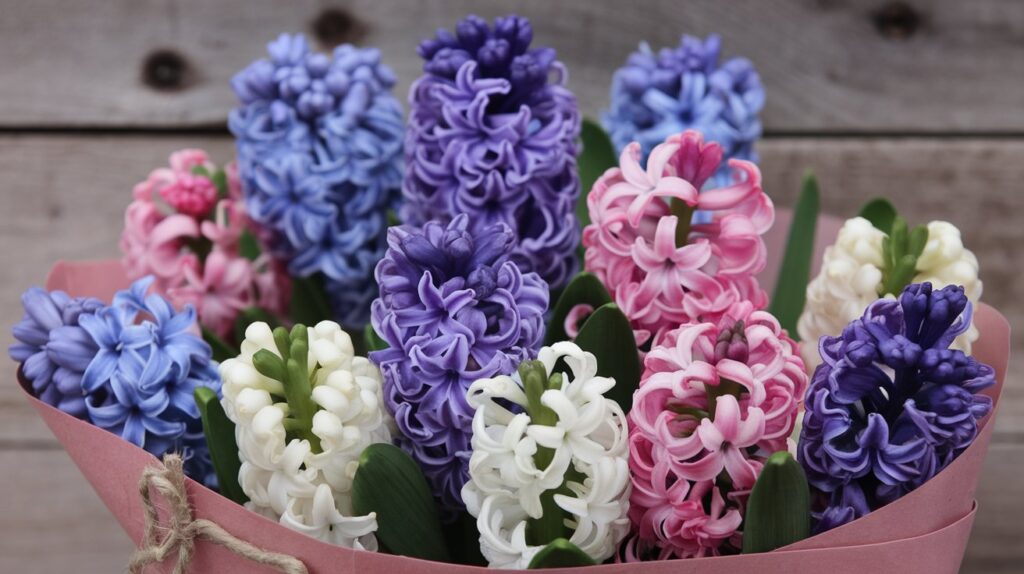
Hyacinths, with their fragrant clusters of flowers, represent peace, rebirth, and transformation. In Christian symbolism, the blue hyacinth represents sincerity and constancy.
Popular Easter Flowers by Color
Yellow Easter Flowers
1. Forsythia
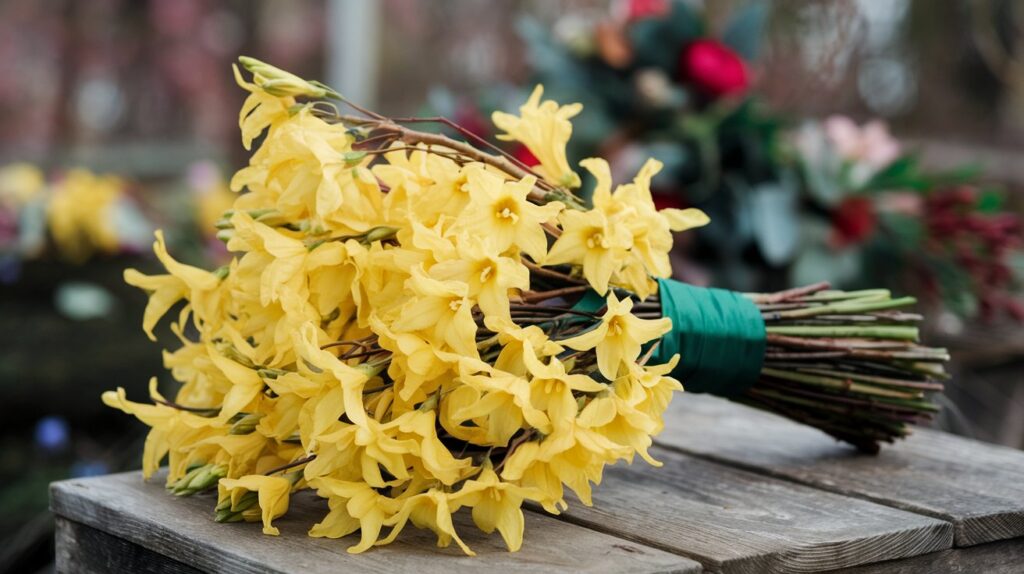
Forsythia, with its bright yellow blooms appearing on bare branches, is one of the earliest spring flowers. It symbolizes anticipation and the promise of spring, making it a perfect Easter flower.
Purple Easter Flowers
1. Iris
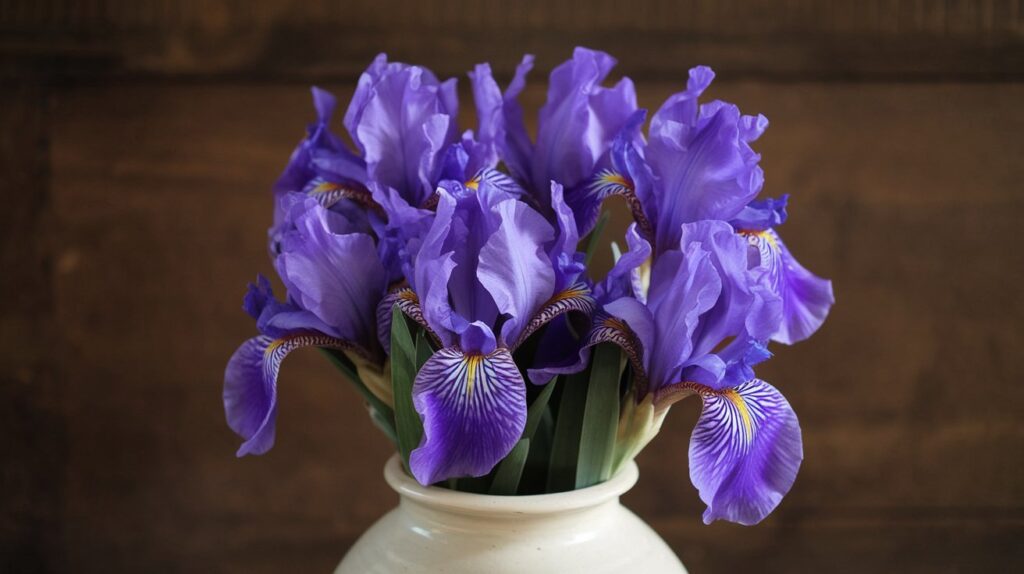
The iris, often found in shades of purple, symbolizes faith, hope, and wisdom. In Christian tradition, the three upright petals represent the Holy Trinity.
2. Crocus
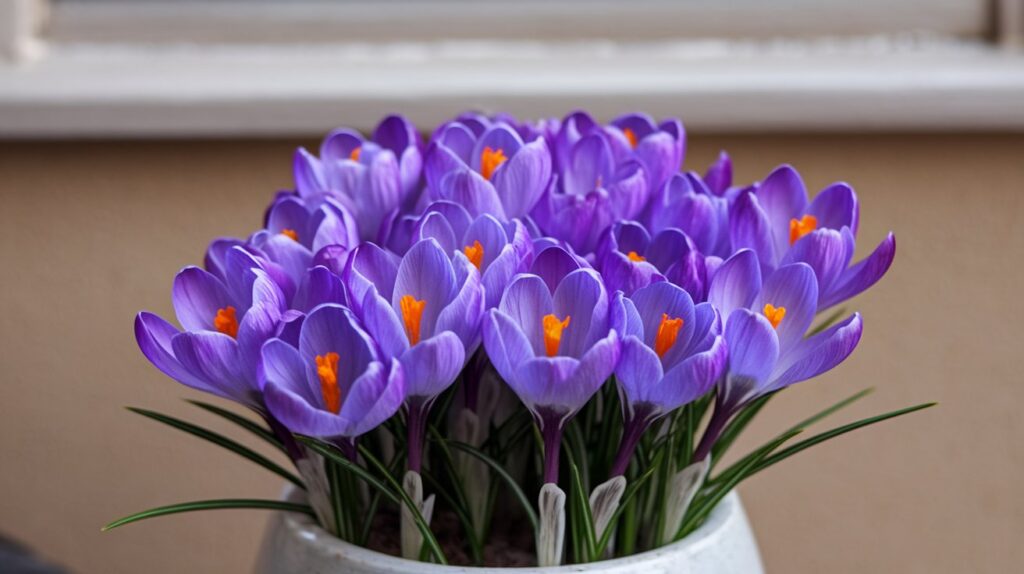
Crocuses, among the first flowers to bloom in spring, represent youthfulness and cheerfulness. Their purple varieties are particularly popular for Easter, symbolizing royalty and dignity.
Other Pretty Easter Flowers
1. Azalea
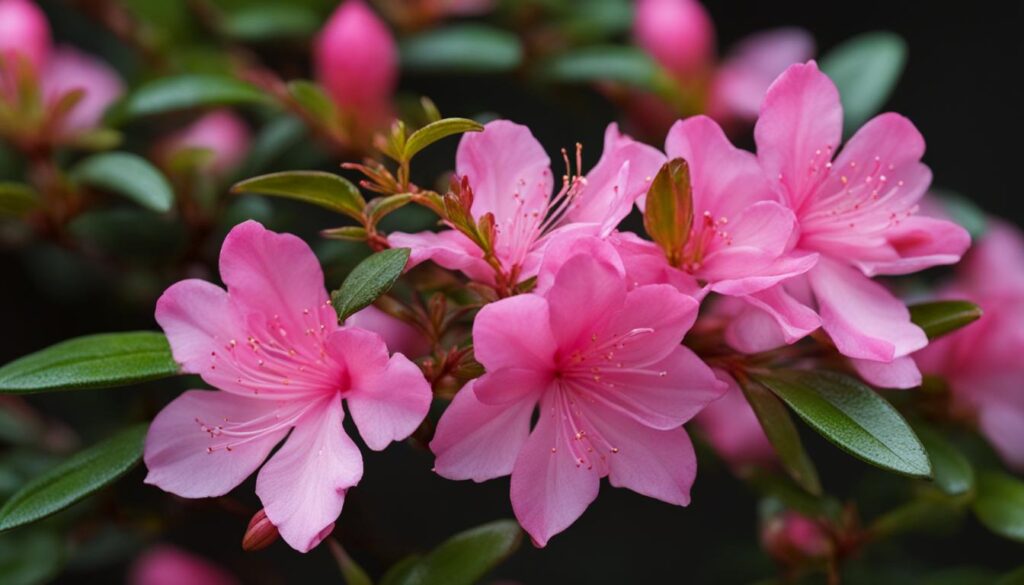
Azaleas, with their abundant, colorful blooms, represent abundance and feminine beauty. These flowers add a touch of elegance to Easter celebrations and are often given as gifts.
2. Hydrangea
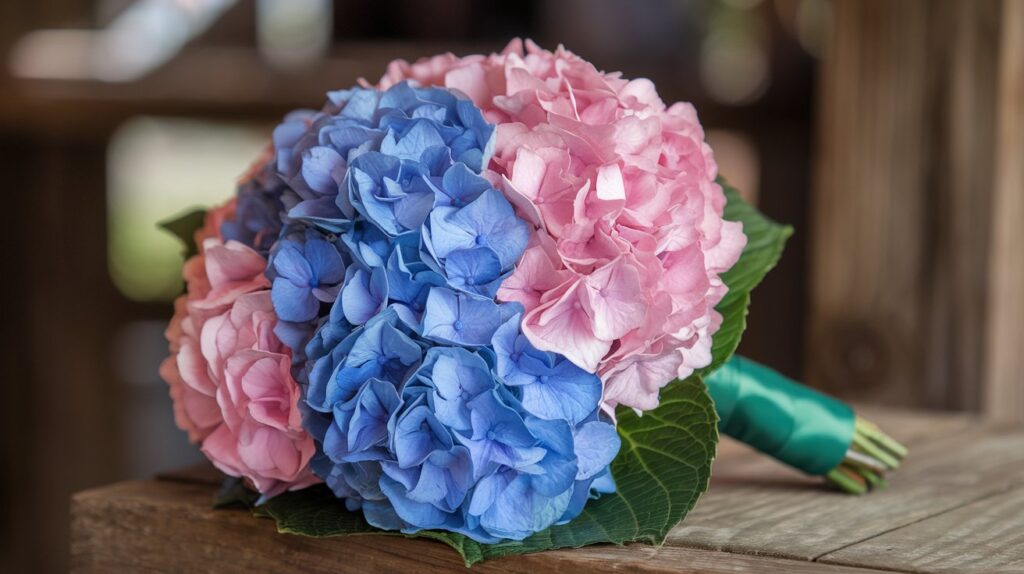
Hydrangeas, with their large, showy flower heads, symbolize heartfelt emotions and gratitude. Their variety of colors makes them versatile for Easter decorations.
3. Crysanthemum

Chrysanthemums, though more commonly associated with fall, are also used in Easter arrangements. They represent honor, loyalty, and devotion, making them meaningful additions to Easter celebrations.
Conclusion
To conclude, Easter flowers are an integral part of this joyous holiday, bringing color, fragrance, and symbolism to celebrations both religious and secular. From the iconic Easter lily to the cheerful daffodil, each of these ten popular flowers carries its own special meaning and beauty. Whether adorning church altars, brightening homes, or being given as heartfelt gifts, these blooms embody the essence of Easter – renewal, hope, and the vibrant rebirth of spring. By incorporating these flowers into your Easter traditions, you can enhance the festive atmosphere and create lasting memories. Remember, whether you choose to arrange them yourself or opt for professional delivery, Easter flowers are a wonderful way to express the spirit of the season and share joy with those around you.

